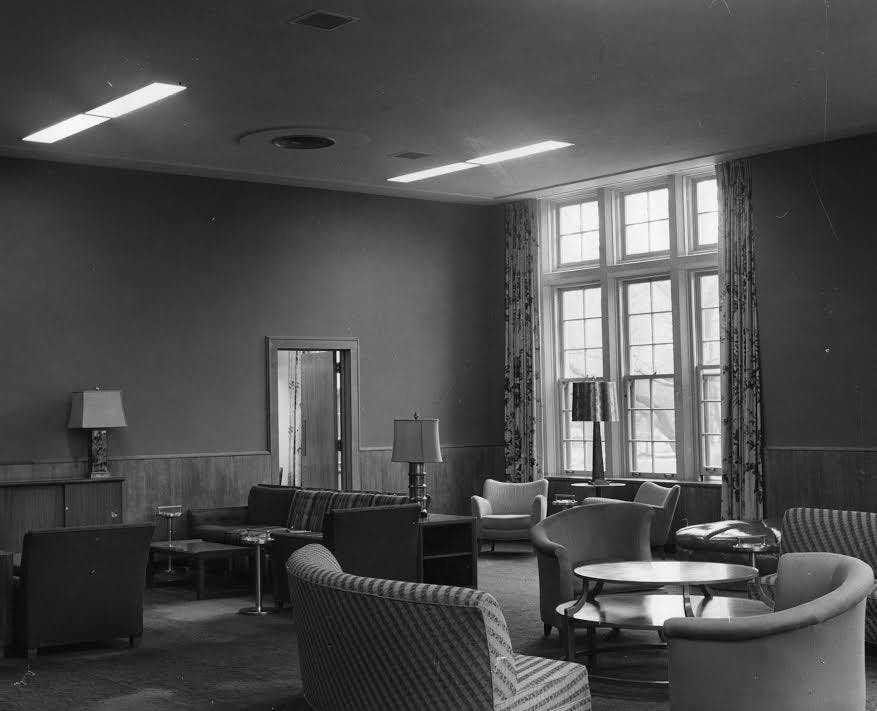One hundred years ago, the first-wave feminist movement was pushing for women’s suffrage, and more colleges and universities were allowing women through their doors.
“1919,” a faded, typewritten article stapled to the Union’s history inside of the MSU University Archives and Historical Collections reads. “Women became a part of the union clubs. They at that time, also become open to all students.”
In 1920, just a year later, women gained universal suffrage.
In 1925 the Union opened, alongside the Women’s Lounge that has provided a safe space for female students ever since, until this summer.
Historically, student lounges have a rich history across the globe.
The first buildings considered student unions were founded 200 years ago, at Cambridge University in 1815 and were strictly male-only during a time when women did not attend college.
The Union was brainstormed 100 years after the fact and included lounging spaces for both women and men, along with many other gender-specific amenities—a barbershop and beauty parlor, male and female wings and cafeterias and separate coat rooms.
When the Union was under construction, women even provided refreshments to the male students who famously helped dig the foundation of the Union during “excavation week” from November 19-24 in 1923, according to the MSU Archives.
According to previous articles by The State News from the early days of the Union, female students and faculty were not common—one publication from 1926 gloats about the union cafeteria “serving 70 women” in total, on a “busy” day.
Widely, it was used during the 1950s and ‘60s as a place of protection for women to wait for their rides home, away from male gaze.
In the 1940s, a vote was put to the student body on whether to keep the men’s lounge, which is now the Dairy Store, or turn it into something for co-ed entertainment, according to the MSU Archives.
When votes were cast, the men’s lounge was done away with without much fanfare.
Alternatively, the recent closing of the Women’s Lounge has made national headlines.
The dialogue about the closure has primarily circled around the concepts covered by Title IX, which discusses discrimination on the basis of gender in federally funded institutions.
This was highlighted when a University of Michigan-Flint economics professor, Mark Perry, filed a complaint that the lounge violated said laws.
To Stephanie Nawyn, the co-director of MSU’s Center of Gender in Global Context, this discussion weighs heavily into a more recent and bigger discussion on safe spaces for oppressed groups.
“Studies have proven that people learn better when they don’t feel anxious,” Nawyn said. “And universities everywhere struggle with the concept of making everything public and accessible to everyone but then not every student will be comfortable with learning in that open space because of their anxiety.”
While it is a small percentage of men who invade and try to make women students uncomfortable in usual study spaces, Nawyn said historically a woman’s most common threat to their focus and education is men, thus creating the issue with the removal of the women’s lounge—a place where female students could avoid potential male assailants, like it was once used in the 1940s, ‘50s, and ‘60s.
“Safe spaces are not created for people to hide from other people who are not like them,” Nawyn said. “They are places where people who are marginalized can go to feel safe and secure.”
Regardless, MSU officials have gone on to say that despite the protests and 5,396 signatures as of 3:30 p.m. on Tuesday on a change.org petition, the history of the women’s study lounge ends here, as it will soon open as a co-ed space.
Support student media!
Please consider donating to The State News and help fund the future of journalism.
To Nawyn, this paradigm shift can and should be used as a positive for the university as a whole.
“What would be more ideal was if the entire campus was a safe space for everyone,” Nawyn said. “Where everyone could pursue academic development and could study without unwanted attention and feel safe.”
Nawyn said the closing could serve to better the whole campus by having the university make campus comfortable, accepting to all.
“This is a great opportunity for the university to think big about not having pockets of safe space like this, but for the university to create a culture that supports and accepts everyone,” Nawyn said.
Discussion
Share and discuss “Women's study lounge a reflection of the past” on social media.





